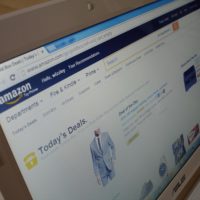Amazon is rapidly becoming the most important retail marketplace in the world. The recent acquisition of the Whole Foods supermarket chain is just the latest example of what many analysts believe is Amazon’s intention to expand into the brick-and-mortar space. At the same time, however, the company is also solidifying its online presence for the purpose of handling more retail operations than any other Internet marketplace.

It is clear that Amazon is on track to augment its eCommerce platform to the point that it will outshine eBay, Alibaba.com and even the burgeoning Facebook stores. To a great extent, Amazon is on track to be a massively global bazaar. What this means for eCommerce an entrepreneur is that they should really take advantage of this platform and becoming Amazon sellers. To this effect, let’s consider the following statistics:
- As of February 2017, Amazon counted 300 million registered users. In fact, half of all American online shoppers visit Amazon, and 80 percent of them make at least one purchase each month.
- A little over 20 percent of all Amazon users based in the United States make at least one purchase each week.
- The net sales reported by Amazon during the second quarter of the year exceeded $38 billion; this is a three-month stretch that is not even considered to be a major shopping period.
Ecommerce entrepreneurs and owners of retail businesses have every reason to join the Amazon Marketplace and list their products as sellers. Who would not want to be a global bazaar merchant with the potential of reaching 300 million prospective buyers? This is exactly what Amazon wants—to turn the marketplace into a wide open online bazaar that entices sellers not just with the promise of millions of prospective buyers but also with the most comprehensive set of e-commerce tools to maximize their online retail potential.
Unauthorized Sellers Flock to Amazon
The problem with Amazon becoming the online version of a Persian bazaar is that certain issues have already emerged with the company’s vision of an open marketplace. In 2016, respected footwear brand Birkenstock decide to not do business with Amazon due to the retailer’s marketplace tactics that encourage unauthorized reselling. Birkenstock CEO David Kahan reportedly accused Amazon of using a heavy-handed approach to increase transactions through third-party resellers who are have not been authorized to represent brands.
What Kahan is referring to is a feature of the Amazon Marketplace whereby products listed by sellers can also be offered by third-party merchants who can simply browse Amazon’s Standard Identification Numbers (ASINs) and select the products they wish to offer. Some economists have praised this system because of its potential to increase sales; however, Birkenstock’s objections about brand dilution, counterfeiting and lack of inventory control are valid. Unauthorized resellers have become a problem for Amazon Marketplace sellers, and the company’s security measures to prevent this problem have thus far been insufficient.
Amazon sellers who list 10 or more products on Amazon are at risk of falling prey to unauthorized sellers, dropshippers and counterfeiters; this is even riskier for sellers who also use Amazon’s shipping fulfillment services. The Amazon Brand Registry system has thus far proved complicated and ineffective in stopping dropshippers and unauthorized resellers; for this reason, Marketplace sellers should evaluate simple monitoring and brand protection such as Brandlox.
How Can Brandlox Help?
With a Brandlox subscription, Amazon Marketplace sellers are alerted whenever their ASINs are listed by third-party sellers who have not received approval. In a sense, Brandlox is the loss prevention system that Amazon does not provide with Brand Registry. The bottom line is that unauthorized sellers do not really hurt Amazon since they increase transaction volume; however, they do hurt merchants who are trying to grow their brands online. To learn more about Brandlox, contact one of their retail security consultants.
